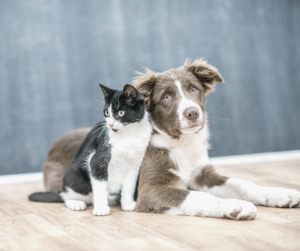Grief is the catchall term used to describe the five stages that one goes through after having suffered
a loss. Naturally, when you lose a pet you will experience grief just as you would when losing a
human companion. A great analogy I once heard was that grief begins as a large ball in a box with a
button on one of its walls. When the ball is huge (when the grief is fresh) any movement to the box
will cause it to press the button and subsequently hurt you. With the passing of time the ball will
become smaller and will eventually stop pressing the button every time the box is moved.
This period of grief or mourning is a complex and lengthy process that will differ in intensity from
person to person. Today, we’ll look at these five stages in no particular order.
Denial:
Denial can be the first or the last thing someone will experience and refers to the ignoring of a
hurtful event, going so far as to say that it never happened. The mind refuses to believe that which
brings it sadness; rejecting the information. This can manifest in pet owners by them still believing
that their pet is alive.
Anger:
Anger is a common response to loss; the mind floods the body with adrenaline and our fight or flight
response is triggered. It is most commonly associated with a feeling of having been able to prevent
the death or being angry in oneself that more couldn’t be done; of course, this mightn’t always be
the case. Anger is dealt with over time like the rest of these stages.
Bargaining:
If only it could be done… Bargaining is the offering of a trade — the mind offering whatever it thinks
is valuable in exchange for the loss to be reversed or perhaps that by changing an aspect of one’s life
can the departed return. In reality, this can never be done which is why bargaining can quickly lead
to anger or depression.
Depression:
After the shock of death comes the first confrontation to the absence of a pet or loved one. This can
result in physical, behavioural and emotional manifestations (crying, loss of appetite, sleep,
palpitations, fatigue, migraine, aggression, guilt, isolation…) comparable to depression, but a normal phase in the throes of grief.
Finally, Acceptance:
To mourn is to remember a pet for the love they brought into your life. It is accepting their death and learning to live without them. We reorganise, we restructure and we keep going, to get out of that black torpor of pain and to remember the parts of them that we cherished in life.
The loss of a pet is something that you and your children do not have to go through on your own.
Family and friends will always be there for you, to support and help you process it. The loss of a
beloved pet can be one of the most difficult times in our lives.
If someone you know has suffered or is currently suffering the loss of a pet; be there for them, offer
them your support or time to talk and make sure they have no regrets with their pet. It can be just as devastating as losing a family member and there is a grieving process just like any other loss.




